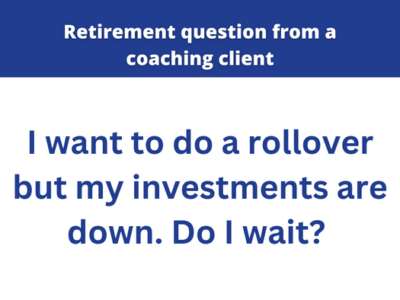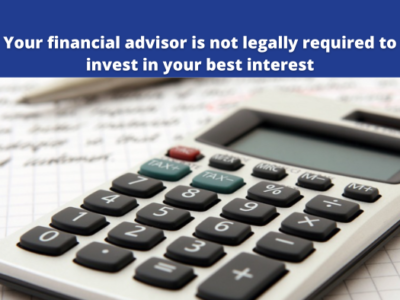There’s a whole reason why people write books on investing. It is because it is a complex topic if you want to get really deep on it, but for most of you guys who just want a retirement nest egg, it doesn’t have to go that deep. So instead of telling you guys how to invest (I’m not technically allowed to), here are my suggested pathways to getting into investing. This is also why I can’t really fit investing into a one hour presentation and it is not a focus during the beginning of a debt free journey.

1. READ AND LEARN – investing takes years to fully understand, but you can get a crash course in it. There are millions of blog posts out there that essentially tell you “buy index funds and hold” but if you want to understand fundamentals of investing, here are some college and graduate level books for you to read, as recommend by University of Chicago and Harvard. I don’t mean for you guys to read these books and fully understand, but I’m highlighting that this is where a lot of professional investors build their fundamental knowledge. And while most of you guys are not going to be investors, there are those who are curious enough that a graduate textbook should be part of your learning
Investments by Bodie, Kane, and Marcus
A Random Walk Down Wall Street, Norton
Principles of Corporate Finance by Brealey and Myers
Corporate Finance by Ross, Westerfield, and Jaffe
2. INTRODUCTORY BOOKS – All right, before I give you guys the shortcut, here’s the short of the story. You learn by reading and doing. So sorry, reading is a part of it. The worst thing you can do is just follow a blogger like myself who is just trying to figure out like everyone else. However, easier reads include the following
The Barefoot Investor by Scott Pape
The Essays of Warren Buffett
3. INVESTOPEDIA is your friend. Any and every financial term I’ve come across, Investopedia is your online encyclopedia to understanding financial terms
4. Understand the concept of and how to calculate EXPECTED VALUE. Expected value essentially is the ultimate equation you are solving whenever estimating the future value of a bet. This concept is typically taught and buried in high school level statistics or introductory college statistics courses, so you should be able to pick it up pretty quickly if you have that level of education
5. SIGN UP FOR FREE ACCOUNTS and fiddle with the online dashboards. You don’t NEED to fund them with any money! For example, it’s free to start at Fidelity or Vanguard. However, I have seen a lot of people make very very basic mistakes because they don’t know what each of the clicks and links on an account do. So start now! It doesn’t matter if you have money. Start now and learn how to navigate the accounts. These web pages are designed for the average investor, so do not be afraid.
6. MAKE FAKE PORTFOLIOS! Using Google Finance > Your Stocks you can create online virtual portfolios that follow a bunch of stocks, indices, anywhere that Google has access to, without ever spending a cent. This way you can watch a stock or portfolio and track its performance without making a decision with your own money.
7. CONSIDER NOT INVESTING YOUR FIRST $10K – The first $10,000 in a portfolio – consider keeping it in the money market fund (I did not do this, but this is a suggestion). This is an idea proposed by behavioral economist and Nobel prize laureate Prof Richard Thaler. He calculated the minimum amount of money someone needs to see their online portfolio to overcome the psychological bias of loss aversion – the number one bias and reason why people do not want to invest. Loss aversion explains how most consumers are so so afraid of a market downturn, that their fear overrides the ability to make a rational calculation and see that historically, investing in the U.S. market has generated decades of real returns (as long as one wasn’t pulling out money the moment a crash happened). The first $10K suggestion is merely a mind hack to keep your mind in the game
8. INVEST YOUR MONEY OVER TIME, SAME AMOUNT, REGULARLY – this method is called Dollar-Cost Averaging (look it up!) and is actually exactly how your 401Ks work. They take a consistent amount of money each period and invest in an investment regardless of the share price, which removes the emotions from the decision. So if you have another $10,000, invest it $1,000 a month on the 1st of every month for example
9. LEARN THE TAX RULES – So many of you guys ask me to differentiate between a 401k and Roth IRA and I’m happy to run an online workshop explaining this, but if you just Google for 5 minutes you will find your answer to this. Many law and accounting firms will give you an easier to digest explanation, but as always, double check their answer against irs.gov, as their blogs could be dated
10. SPEND A LITTLE TIME ON IT EACH DAY – Just like every other personal finance concept I teach, if you bite off more than you can chew, you are going to give up. So do a little at a time. The knowledge I have today is built on over a decade of spending at least 1 hr a day on my personal finances. How you spend your time is the ultimate investment in yourself
There is no one approach to investing. Just as personal finance is personal, how you choose to invest is completely up to you. We don’t all learn or earn money or spend it the same way. Same goes for investing.





